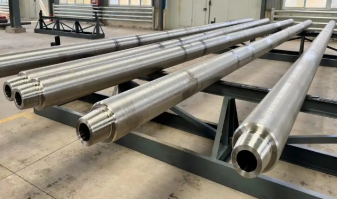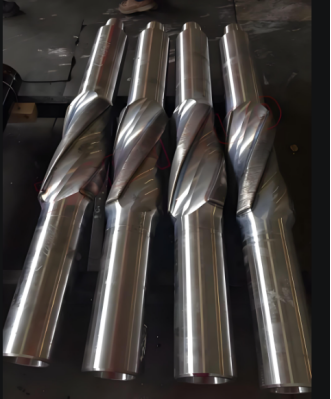In oil drilling and logging operations,non-magnetic tools are primarily used to avoid interfering with the working environment of magnetic measurement devices (such as gyroscopes, magnetometers, etc.), ensuring the accuracy of directional drilling or geomagnetic measurements. Below is a classification and examples of common non-magnetic tools in the oil industry:
1. Non-Magnetic Drill Collars (NMDC)
Purpose: Used in directional drilling to house Measurement While Drilling/Logging While Drilling (MWD/LWD) tools, preventing magnetic interference.
Material: Typically made of non-magnetic alloys (e.g., Monel, stainless steel, or nickel-based alloys).
Features: High strength, corrosion resistance, and extremely low magnetic permeability.

2. Non-Magnetic Stabilizers
Purpose: Stabilize the drill string and maintain wellbore trajectory while avoiding interference with magnetic measurements.
Design: Similar to non-magnetic drill collars but equipped with stabilizer blades.

3. Non-Magnetic Subs
Purpose: Connect different components of the drill string, providing a non-magnetic transition section.
Types: Include non-magnetic crossover subs, non-magnetic hanger subs, etc.
4. Non-Magnetic Jars
Purpose: Provide jarring and freeing functions in directional drilling without interfering with magnetic tools.
5. Non-Magnetic Heavy Weight Drill Pipe (HWDP)
Purpose: Replace some drill collars to reduce drill string weight while maintaining a non-magnetic environment.
6. Non-Magnetic Logging Tools
Purpose: Used in wireline logging or Logging While Drilling (LWD) to measure formation parameters (e.g., resistivity, natural gamma) without magnetic interference.
Examples: Non-magnetic natural gamma tools, non-magnetic resistivity probes, etc.
7. Non-Magnetic Steering Tools
Purpose: Work with steering drilling systems to ensure wellbore trajectory control is unaffected by magnetism.
8. Non-Magnetic Casing and Casing Accessories
Purpose: Used in sections requiring magnetic measurements to avoid interference with subsequent logging.
Key Material Technologies
Non-magnetic tools are typically manufactured using the following materials:
- Monel Alloy (Nickel-Copper Alloy)
- Austenitic Stainless Steel (e.g., 304/316 Stainless Steel)
- Nickel-Based Alloys (e.g., Inconel)
- Titanium Alloys (Lightweight and non-magnetic)
Application Scenarios
- Directional drilling (near MWD/LWD systems)
- Geomagnetic measurements or geosteering
- High-precision wellbore trajectory control
- Avoiding interference with magnetic logging tools (e.g., NMR logging)
Precautions
- Magnetic Permeability Requirements: Typically, relative permeability should be ≤1.01 (close to air).
- Temperature and Corrosion: Suitable materials must be selected based on downhole conditions (e.g., H₂S, high temperature).
- Regular Inspection: Materials should be inspected for magnetism caused by stress or corrosion after prolonged use.
Junnie Liu
Mobile/Whatsapp:+0086-158 7765 8727
Email: landrill@landrilltools.com
Post time: May-09-2025








 Room 703 Building B, Greenland center, Hi-tech development zone Xi’an, China
Room 703 Building B, Greenland center, Hi-tech development zone Xi’an, China
 86-13609153141
86-13609153141


